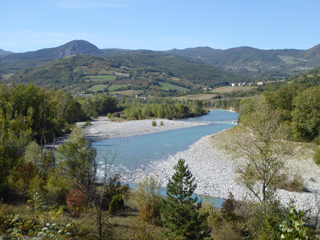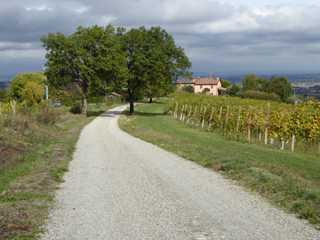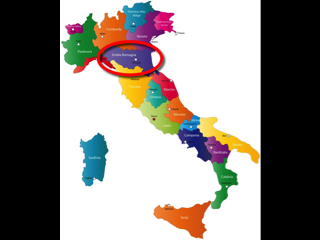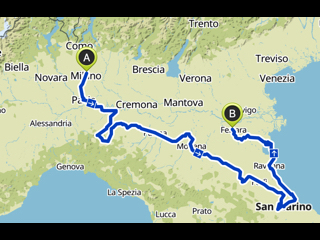
Milan – Pavia – Piacenza – Bobbio – Parma – Modena – Bologna – Brisighella – San Marino – Rimini – Ravenna – Comacchio – Ferrara
(826 km cycled)
Take two! With borders open again, Darina’s Easter surprise trip for Kurt got a second chance. And boy was it worth the wait! Emilia-Romagna is Italy at its best, with extravagant palaces, medieval villages and stately castles set in terrain ranging from the extensive River Po plains to the picturesque Apennine range. We were treated with endless gastronomical delights and didn’t have to deal with hordes of tourists. The region offered all we could possibly have hoped for, with a few surprises thrown in for good measure.
A local train saw us to Milan, capital of the Lombardy region, where a visit to the magnificent Duomo was a must. With more than 2,000 statues and 52 pillars, it is no wonder it took almost six centuries to complete.
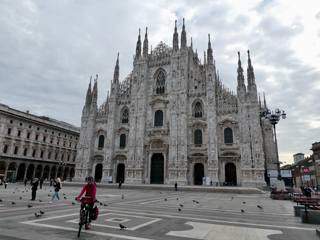

Darina then headed for Galleria Vittorio Emanuele II, the beautiful shopping mall nearby in search of the famous bull mosaic. She dug her heel good and hard into the bull’s private parts and completed three pirouettes for good luck, ensuring that this century-long tradition lives on!
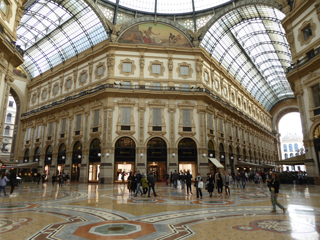
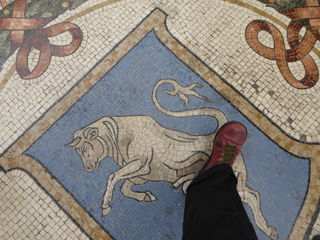
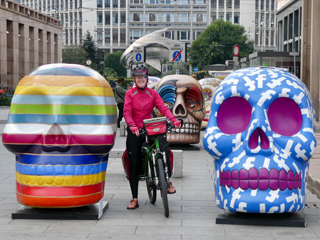
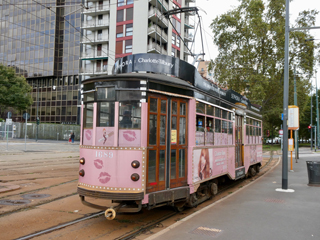
Exiting this metropolitan area of 3.3 million was a breeze along the Naviglio Pavese Canal all the way to Pavia.
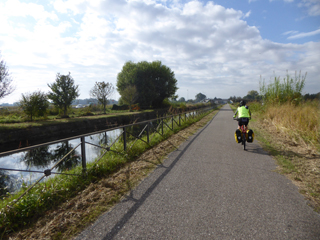

Luckily, we weren’t relying on the River Ticino bike lane, where a rubber dinghy would have been more appropriate! Pavia‘s 30,000 students would usually bring a lot of life to this town, but now with distance learning becoming the norm, some of the local bar and restaurant owners are wondering how long they will be able to keep their heads above water.
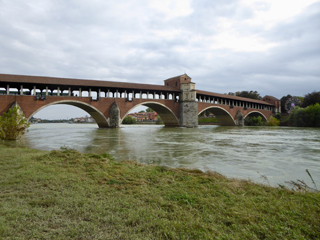
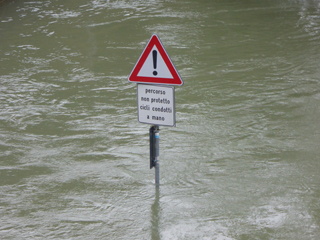
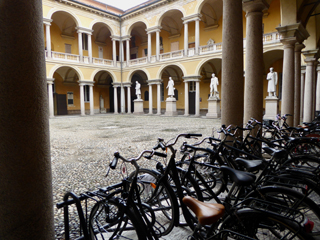

Built in 187 BC to maintain the recently acquired territory of the Romans, the Via Emilia linked Piacenza to the Adriatic coast at Rimini to facilitate the settling of surplus Romans and retired soldiers in the newly founded towns of Bologna, Parma and Reggio nell’Emilia. This route provided the backbone of our trip.
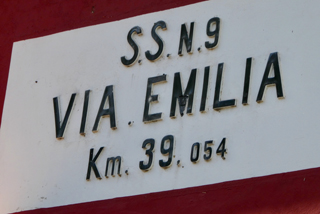
Piacenza’s claim to fame is the Etruscan liver exhibited in the local castle. The bronze model, detailed and labelled with all sorts of characters and signs, is thought to have been used as a fortune-telling code. Sacrifice a lamb, pull out his liver, split it in half and see what it tells you about your future!


While we didn’t manage to organise a ticket to see Michelangelo’s famous “Last Supper” in Milan, Piacenza’s cathedral offered us a double bill. The modern version, complete with a dog begging for scraps, can be admired on the wall or in the baptismal font below!


An Irish connection led us to Bobbio, one of Italy’s most beautiful small towns. In the 7th century, twelve Irish monks headed south through the continent, founding monasteries along the way. Gallus settled in our hometown, St Gallen, Switzerland, while Columbanus made it to Lombardy. The local royalty granted him a stretch of land in Bobbio to set up a monastery and convert the locals. The town today is built around the monastery, and its scenic location across a humped Roman bridge over the River Trebbia is a great starting point for peaceful climbs or hikes into the foothills of the Apennines.
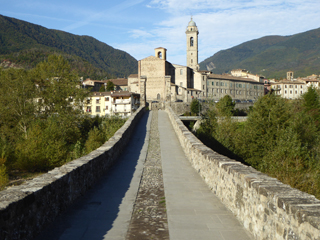


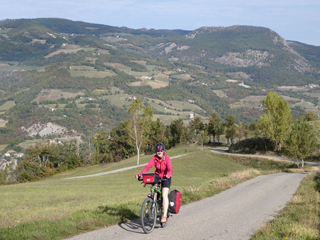

Back on the Via Emilia, it’s an easy spin from town to town, often with either a generous hard shoulder, dedicated bike lane or at least considerate traffic. Each town has a story or two revolving around their nobility, and Parma is no exception.

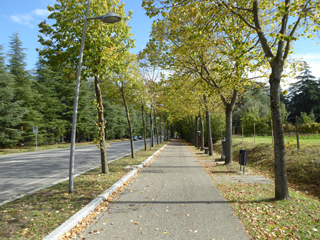
Home to Giuseppe Verdi, Parma ham and Parmigiano cheese, Parma is a great place for dining and opera visits. The Teatro Farnese was built in the 17th century in preparation for a state visit from the Medici family head. In a bid to impress his counterpart from Florence, hoping for a marriage between the two families, the Farnese Papa arranged the construction of a lavish wooden theatre to seat 3,000 people, where Papa Medici would be properly entertained. Well, the visit had to be cancelled, but the theatre was completed in time to host the wedding celebrations that the Farnese family had initially hoped for!



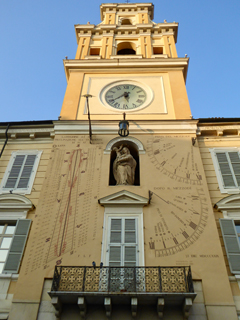
No trip to Modena would be complete without learning all about the local balsamic vinegar. Produced by allowing cooked grape juice ferment and mature in wooden barrels in the attic, this vinegar has a PDO (Protected designation of origin) classification due to the special micro-climatic conditions of the area. Pretty much every family produces a few litres, so quite a sweet-sour waft permeates the air. Of course, Pavarotti fans can visit his homeplace and petrol heads can go for a spin in a Ferrari!
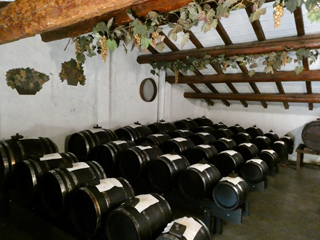
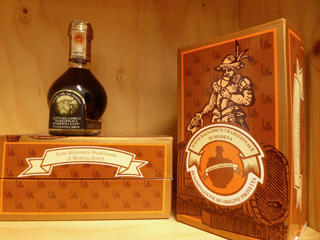
The Calatrava building that you might have seen in the virtual tour update is in fact the new high-speed train station in Reggio nell’Emilia. 457 steel frames placed at 1m intervals give it a fluid appearance, and the glass window panes provide full-time employment to a host of cleaners, who struggle to reach the upper extremities! While we are dedicated fans of Santiago Calatrava as an architect, we have noticed that quite a few of his projects start rusting and crumbling after a number of years; this station being no exception. It makes us wonder if the initial budget for his creative designs should stretch further to include ongoing maintenance costs.
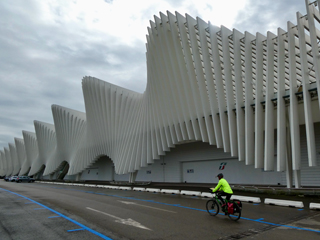
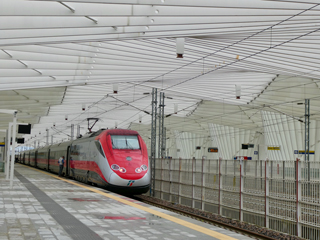
Bologna‘s colonnades make it a great place for shopping in the dead heat of the summer as well as on miserably wet autumn days. What we enjoyed most in the city was a visit to some of the earlier rooms of Europe’s oldest university. The anatomy theatre was certainly the most impressive, where the lecturers would have dissected organs on the marble table as their students sat in the solid wooden theatre above, under an intricately carved wooden ceiling depicting the Zodiac signs. Those were the days! In Covid-19 times, anatomy students probably watch some YouTube video on their mobile phones while snuggling up in bed, with Twitter and Whatsapp notifications offering distraction at 30-second intervals!


Dozza is one detour we can highly recommend. Perched on a ridge south of the Via Emilia, this small cobble-stone village is the venue for a street-art festival every couple of years. As a result, it has become quite the outdoor gallery with paintings on most facades in the walled center.
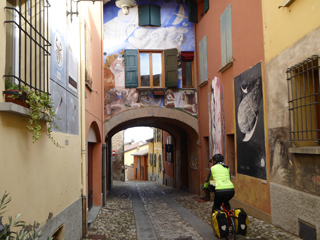
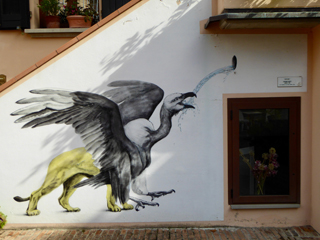
From there, we cycled past the Formula One race course in Imola. We are becoming experts of a sort after our trip past the Nürburgring this summer. While we had Trabis entertain us in Germany, this time round, it was vintage cars that were doing the laps.
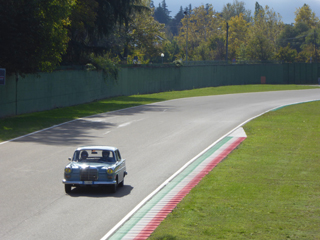
A few hills later, we enjoyed another one of Italy’s most beautiful small towns: Brisighella. The three overlooking hills have castles/towers safeguarding this beautiful medieval town that made its money in the past with gypsum mining. La Grotto restaurant, set in an ancient cave, is definitely one not to miss.
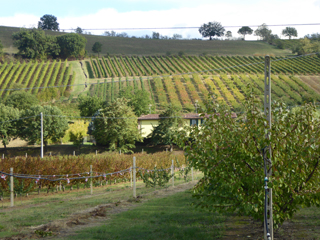

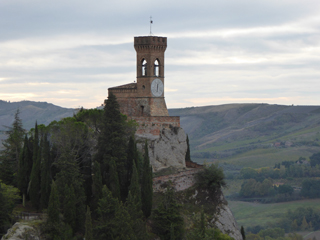
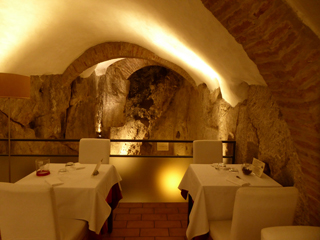
It was in Savignano where Julius Cesar crossed the Rubicon to turn the Republic of Rome into the Roman Empire, with himself as the Emperor. We crossed it too, with less grandiose plans. Really, we didn’t even contemplate taking over San Marino!
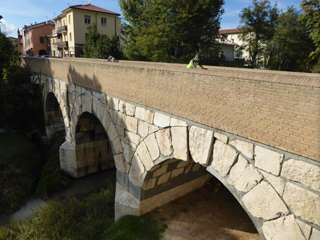
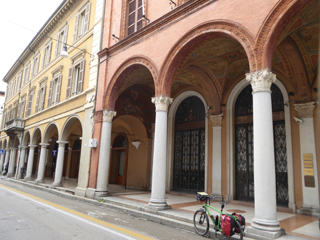
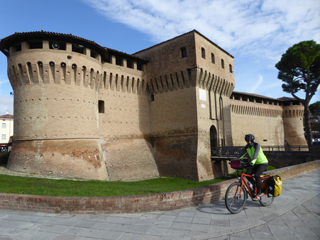
San Leo, named after a Dalmatian bishop who spread Christianity in the area in the 4th century, was recommended to us as more pleasant version of San Marino. It is a small village with a castle and tower on top of one of the many outcrops in the area, but we got more of a buzz out of the real thing.

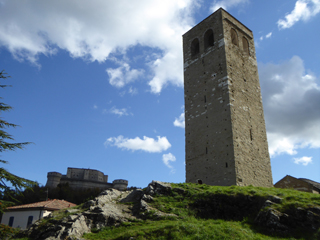
Around the same time as San Leo, a stone mason (another Dalmatian) fled to the top of a nearby ridge during the last Roman persecution of Christians. Often threatened by neighbouring bishops, nobility or warlords, the developing community and republic managed a successful defence by force or alliance. That stone mason would be very surprised today if he could see that his refuge is still fiercely independent and even carries his name: San Marino.
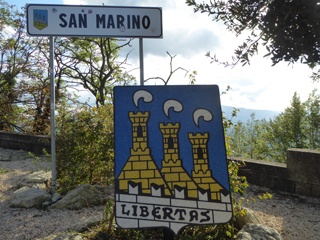
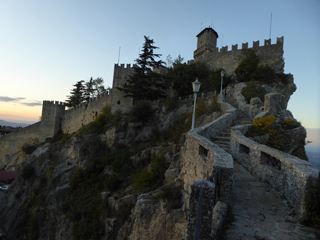
The old walled town, with its three castles on the ridge, attracts two million tourists a year, seriously outnumbering the local population of 30,000. Italian is the official language of this tiny republic, and they use the Euro as their currency, although they are neither in the EU nor the Euro zone. They have their own constitution and the parliament elects two Captains Regent every six months, who share power. San Marino is often considered one of the richest states in the world, relying on financial services and tourism. We thoroughly enjoyed the atmosphere and views with hardly a tourist in sight. Just as a hint: If you want to cycle up, there are easier gradients than coming from San Leo in the west!


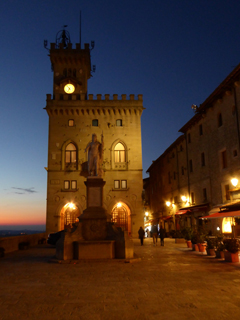
Rolling down to the sea was a breeze. The beach itself was less of a highlight, overrun with amusements, restaurants, bars and huts for sunbed storage; the hotels behind in varying degrees of decay. Rimini’s old town is its only saving grace with the white marble Tiberius Bridge, the original starting point of the Via Emilia.


The inaccessible beach theme continues until Cesenatico, a beautiful colourful fishing village, further up the coast.
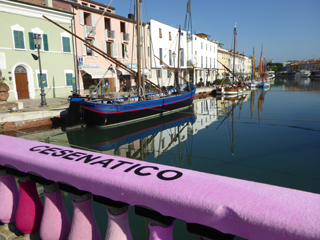
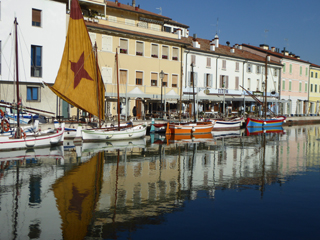
Crossing the Rubicon again, it wasn’t long before we were in Ravenna. Like Trier, Arles and Milan, Ravenna was a Caesar’s residence in the latter part of the Roman Era. Famous for its magnificent Byzantine-style mosaics in the various churches around town, it was the inspiration for Gustav Klimt’s golden phase after a visit to the town in 1903. Ravenna’s mosaics are definitely something to see before you die, and they beat those of the Hagia Sophia in Istanbul hands down!


With the region of Venezia landing on Switzerland’s quarantine list, we decided to stay south of the River Po instead of continuing up the coast to Venice. We would suggest following the bike route on the west side of the lagoon north of Ravenna to avoid the heavy traffic to and from the port of Venice on the SS309.
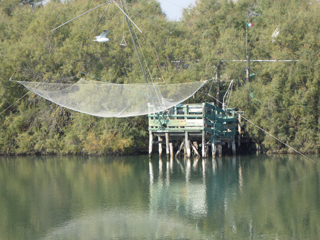

Comacchio gave us the Venice feel, and located at the edge of the Po Delta Regional Park, it even promised sightings of our dearly beloved flamingos.
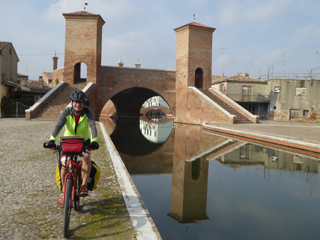
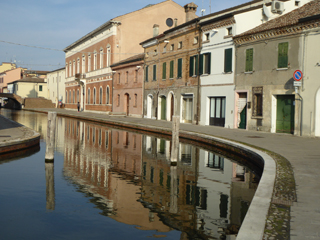
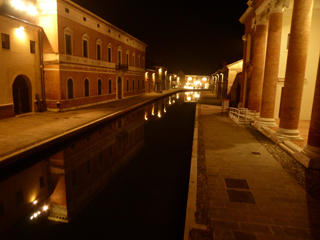
To our great disappointment, the thick autumn fog that greeted us next morning was really not conducive to birdwatching. Two flocks did put up a show in the marchlands, offering a few shades of pink in the otherwise grey landscape. And by the time the sun broke through, we were already halfway to Ferrara.
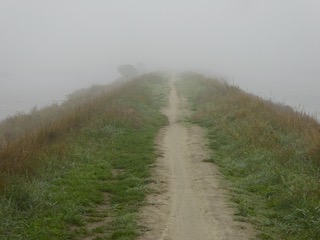
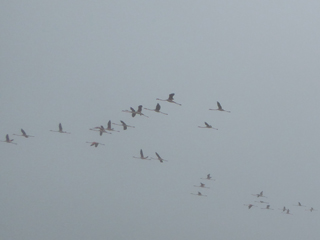
Ferrara, the cycling capital of the region, is built around a splendid redbrick castle complete with a moat, and a few palaces and lively streets complete the picture. Certainly a worthy place to end the tour! We even got to see 400 vintage cars rattle in and out of town on their Mille Miglia (thousand-mile rally) around Italy, termed “the most beautiful race in the world”!


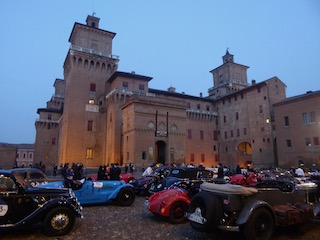
A train strike on our departure date resulted in a seven-train hop-scotch combination back to St Gallen.
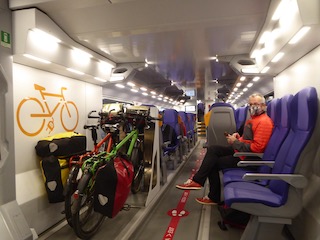
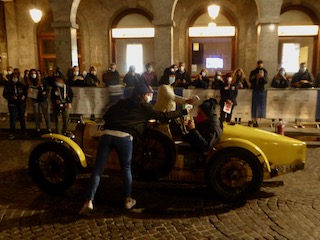
Being on the bikes every day, Covid-19 didn’t bother us too much. Masks were mandatory in all public places even outdoors, and our temperatures were taken when entering some museums, churches and restaurants. With rising numbers of cases since our return, bars and restaurants must now close at 6pm, museums and galleries have shut their doors, there is a curfew from 10pm, and some neighbouring regions have gone into their second lockdown. Actually, cases per head of population were, and still are, much higher here in Switzerland, so we felt a whole lot safer away from it all.
The great thing about cycling through Emilia-Romagna is the chance to overnight in amazing palaces dating back to the 15th or 16th century, without breaking the bank. Double rooms with bed and breakfast ranged in price from 40-80 Euros. Breakfast was generally a continental affair of pastries, cakes and rusks, with cheese and ham if we were lucky!
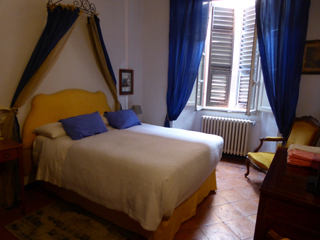

Bakeries and supermarkets were at hand for lunchtime picnics, and dinner was a real treat! A pre-dinner drink was often accompanied by an extensive aperitivo platter of focaccia, cold cuts and snacks that kept our hunger at bay until the restaurants opened at 7.30pm. The locals are very proud of the many Emilia-Romagna specialities and rightly so. Ragù alla bolognese was a recurring theme, but we would need another couple of trips to sample all their pasta variations alone!
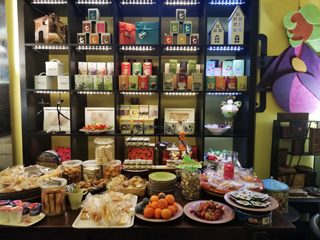
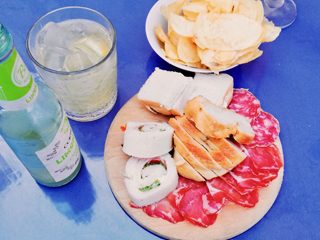

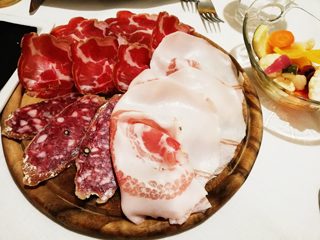
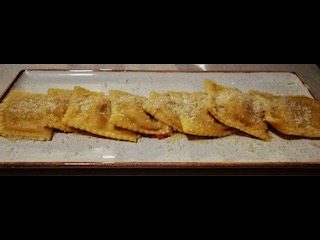
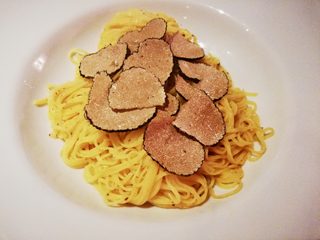
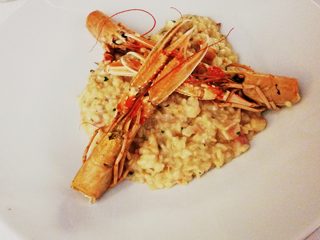


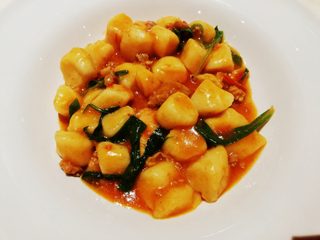


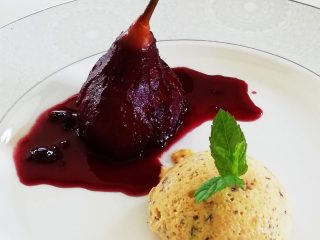

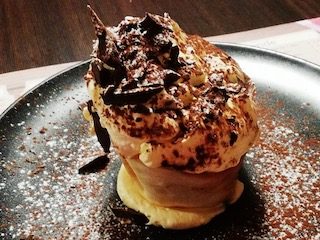
Although Darina’s initial plan was to follow the Via Emilia, it was when we left this old Roman road that the region exposed many surprises in the form of charming villages in scenic mountainous terrain. The friendly, interested and helpful locals certainly complemented our very positve experience, and we have great intentions to criss-cross the region again on another trip! Emilia-Romagna is the business!
